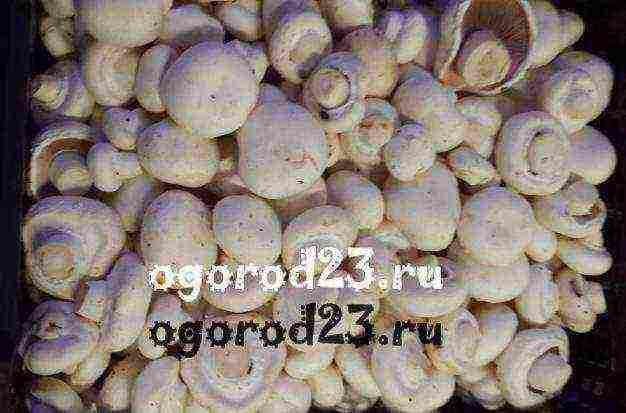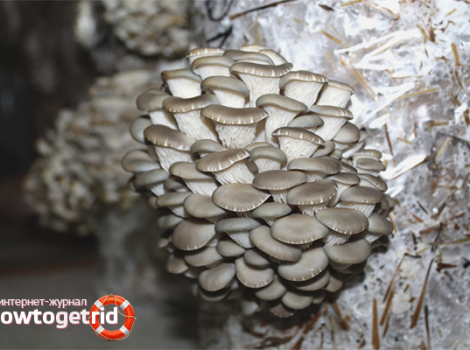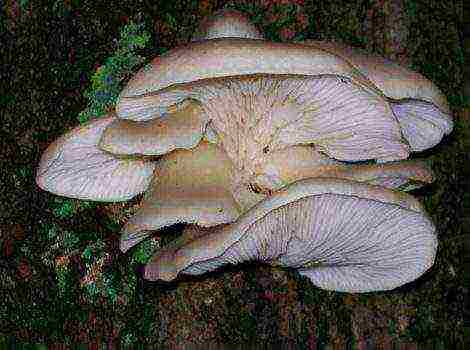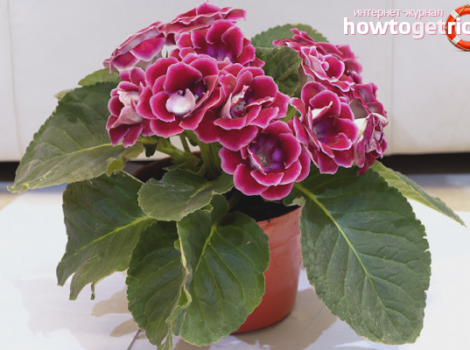Content [show]
Champignons are quite common mushrooms. They are massively grown for use in the food industry, in particular in cooking. Entrepreneurs build their business on their breeding, which brings good income. But experienced farmers prefer home-grown mushrooms. Read about this in the article.
What is included in the soil?
Is it possible to grow champignons at home? Of course, this is within the power of a farmer or owner of a private backyard without any experience. The main thing is to stock up on knowledge in this matter and clearly follow the instructions. The most time consuming process in mushroom cultivation is soil preparation. For a mycelium area of three square meters, 100 kilograms of plant ingredients will be required, which include the following:
- Straw.
- Cereal grains, you can use rye or wheat.
- Fallen leaves of plants.
- Tops from tomatoes or potatoes.
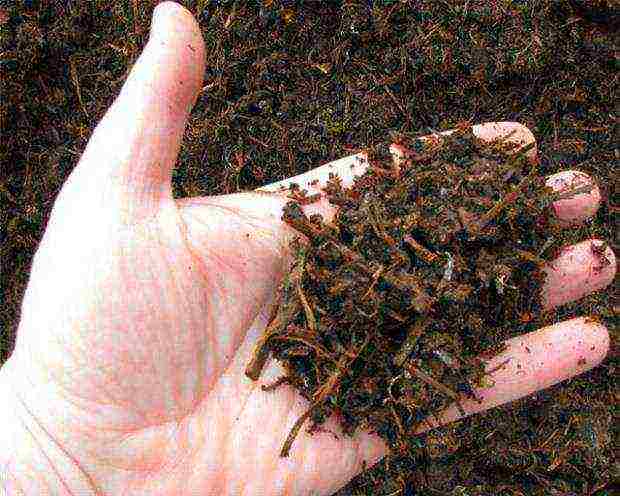
In addition, the composition of the soil should include:
- Horse or cow manure in the amount of half a centner.
- Water - 300-400 liters.
- Urea and superphosphate in an amount of two kilograms each.
- Plaster - seven to eight, and chalk - five kilograms.
You can prepare a different formulation using poultry droppings. Other ingredients and their quantity are taken here:
- Litter and straw - centered.
- Water - 300 liters.
- Gypsum, alabaster - as in the previous composition.
- Urea is two kilograms.
Composting process
First you need to make a collar with the same dimensions (one and a half meters) in width, length and height. It is with this ratio of parameters that combustion will properly occur. The compost will mature in two to three weeks.
How to grow mushrooms at home? First, you need to plant them in soil, which is prepared as follows: all components of plant origin and straw must be soaked for a day. At the same time, they and manure should be laid in layers, and the straw should be watered abundantly. The components contained in the pile must be thoroughly mixed and moistened once a week to ensure proper combustion. At the first mixing, crushed lime is added to the compost. Second time - superphosphate. Then mixing is carried out with the addition of crushed gypsum or alabaster. Each time after mixing, the resulting stack is covered with foil.

It should be borne in mind that during the preparation of the soil, an unpleasant odor will be emitted, similar to ammonia and carbon dioxide. Therefore, it is better to do cooking on the street. But at the same time, protection from sunlight and precipitation is needed. If you organize the process indoors, it should be well ventilated.
How to grow champignon mushrooms at home? To do this, you need to take into account important points, without which this process is impracticable. First of all, a stock of compost is made, since it is necessary in a large volume to grow mushrooms. During its preparation, the temperature can reach from 53 to 70 ° C. When the combustion process is over, the thermometer will drop to 21-25 ° C, and the unpleasant odor will disappear. The finished soil has an elastic structure and a brown color. It does not stick to your hands, the straw can be easily torn apart.
How to lay out the compost correctly?
When the preparation of the soil is completed, they proceed to another procedure - laying it. First you need to select containers in which the mushrooms will be grown. They can be racks, wooden boxes, plastic containers, bags. The compost mass is laid out in prepared containers in a layer, the height of which should not exceed 22 cm.
Mycelium types
The seed of mushrooms is called mycelium. It is grown at home or in laboratories. There are two types of mycelium:
- Compostable - this type of seed is stored for a long time at zero temperature, for about a year. For an area of one square meter, 500 g of mycelium will be required.
- Grain - this composition is more effective than the first. Seed material of this type germinates better and gives large yields. Its consumption for the same area is less, only 330-350 g. But this mycelium has a significant drawback: a short shelf life. Only half a year its properties are preserved. Keep the seed in the refrigerator.
How to grow mushroom mycelium at home?
If the mushrooms are grown commercially, it is better to buy planting material. But some are embarrassed by the conditions in which it was grown, and therefore they do it on their own. To obtain the material, you need to sow spores or isolate it from the fruit bodies, and then place it in a specially prepared medium: wort agar. Its preparation is carried out according to the following technology:
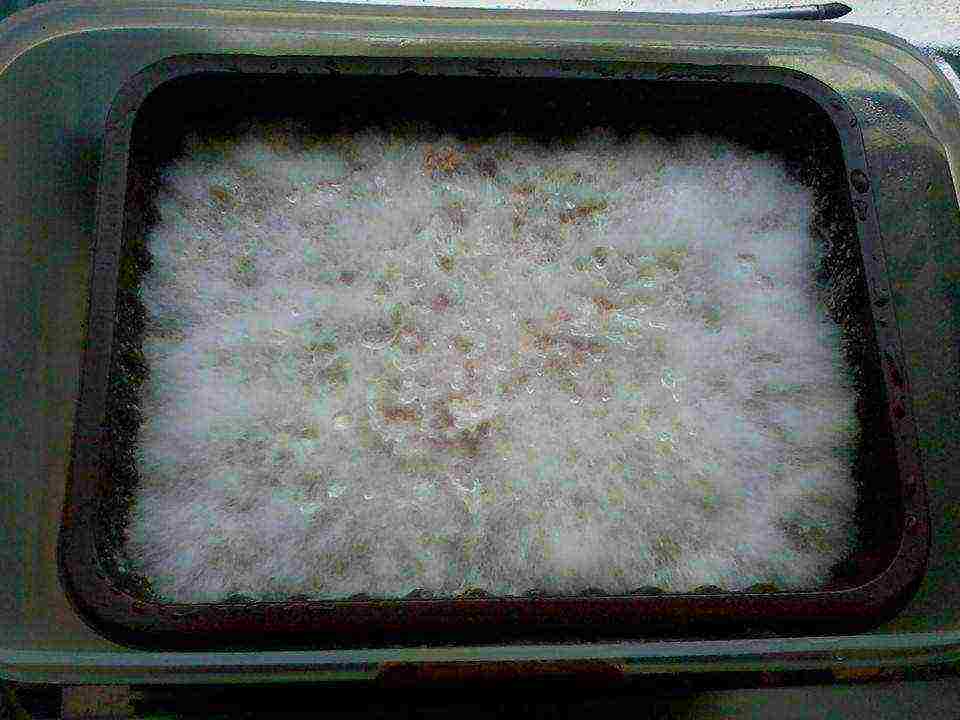
- First you need to mix beer wort (one liter) and agar-agar (20 g) with boiling water.
- After dissolving the ingredients, the composition is poured into test tubes for a third of them. Then the containers are plugged with cotton swabs and placed in an autoclave with a temperature of 101 ° C and 1.5 atmospheres for 30 minutes.
- The test tubes are placed not straight, but obliquely, so that no more than 3.5 cm remains to the plugs. Now it remains to wait until the wort hardens.
- After that, spores or a piece of the fruiting body must be added to the test tubes, while observing sterility.
- Containers should be kept in a thermostat or dark room at a temperature of 24 ° C until they are overgrown. In a couple of weeks, the nutrient medium will be assimilated by the myceliums. This means that they are completely ready for landing.
Usually this composition is used by mushroom pickers to grow mycelium at home, although there are also substitutes: oat agar, carrot agar.
Correct mushroom cultivation technology
Mushrooms can be grown at home using mycelium. To do this, you need to plant it correctly, and in the room you need to correctly select the temperature and humidity mode. If these conditions are met, the first harvest can be obtained in a year.
If grain mycelium is the planting material, grooves 30 cm deep and 50-60 cm wide should be made in the soil. The distance between the pits should be 20 cm. In order for the temperature to normalize, you need to leave them for two to three days and only then lay the mycelium. A checkerboard pattern is used to locate the body of the mushroom.
If compost mycelium is used for planting champignons, the technology is different. The bottom of the small pits is covered with drainage. Compost is placed on top, in which the mycelium is placed. After that, the planting material is closed by it. Subject to all the rules, taking into account the high-quality mycelium, after seven days, you can expect the appearance of new branching threads.
After 21 days, you need to lay out moist soil on top of the beds 25-30 cm thick. If the layer is larger, the bodies of the mushrooms will be blocked, their germination will not occur soon.

In order to maintain the temperature regime in the room where the mushrooms are grown, you need to temporarily install sheds or cover the ground with straw. If a white bloom appears on the compost, it means that it needs to be moistened. After watering the soil, the canopy or straw is removed.
The first harvest will not have to wait long, only 45 days. You need to pick mushrooms as soon as they ripen, since the yield period is short, only three to four days. The next fruiting period should be expected in three to four months. The harvests of the first waves are the richest.
Champignons in bags
How to grow champignon mushrooms at home? There are many possibilities for this. Each courtyard has outbuildings and basements. They are adapted for growing mushrooms. However, you can grow mushrooms at home in plastic bags. This method has been used in many countries for a long time. It allows you to get large volumes of mushroom harvest.
Bags can be made by yourself from a transparent polymer film of various capacities. For growing at home, 25 kg are more suitable. But the main criterion for choosing bags is the convenience in performing work on growing mushrooms. And for it to be successful, you need to correctly arrange the bags in the room. This is done in a number of ways, but the most common are the following:
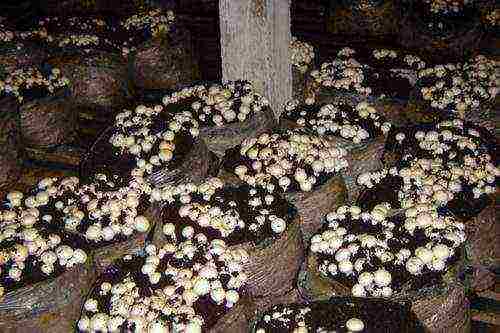
- According to the principle of chess arrangement. With this method, the usable area is not used only by 10%.
- Parallel bag placement. In this case, the area loss is even greater - 20%.
This can be compensated for by deep bags, which are filled with more substrate. And the space between the unusual beds is used for air circulation. There are different options for how to grow mushrooms at home. If everything is done in compliance with the technology, you can achieve an excellent result.
Harvest in bags
The mushroom picking time is the most enjoyable time. The mushrooms ripen four months after planting the mycelium in the soil of the bag. When harvesting, you need to be very careful: you cannot cut off the mushrooms with a sharp blade or other object, they need to be twisted. After that, the mycelium is sprinkled with a nutritious substrate and watered using a spray bottle. It will bear fruit for two weeks. During this period of time, the mushrooms are harvested in two to three days. It is advisable to use fresh, not frozen mushrooms for food. Mushrooms with light plates inside the cap are useful. If the mushrooms are old, then they will have a brown color, as these mushrooms accumulate toxic substances that can be poisoned.
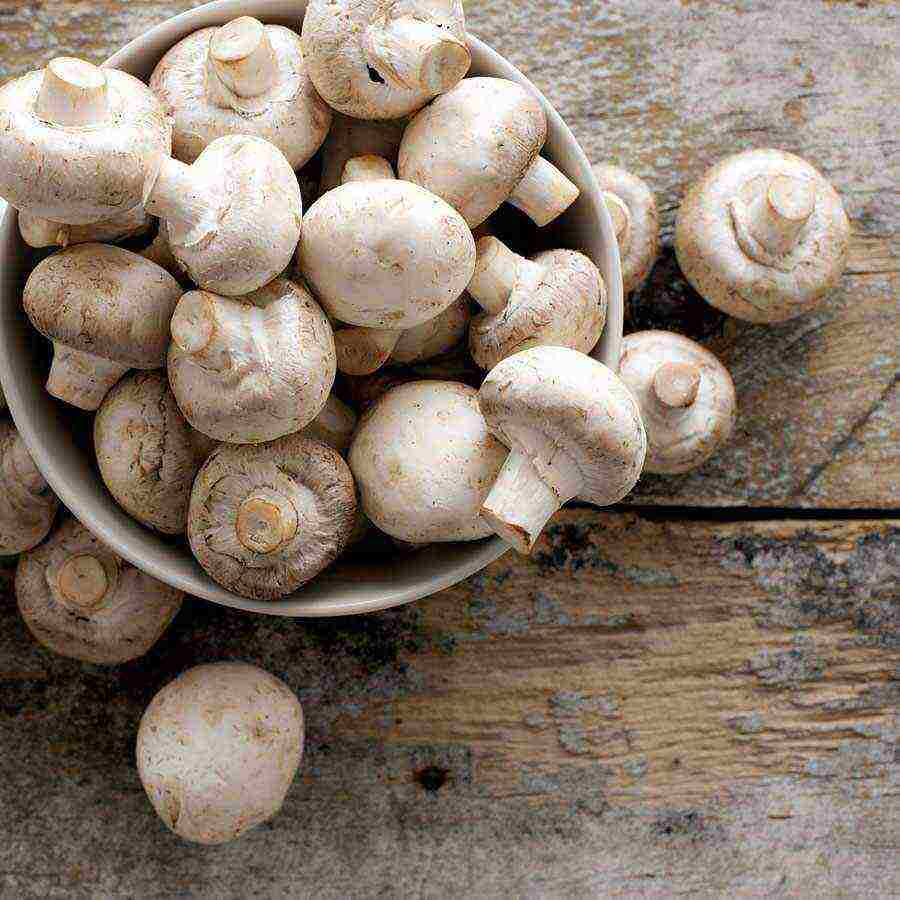
Benefits of growing mushrooms in bags
These mushrooms are unpretentious, they can grow in an open-air garden bed or indoors. But experienced mushroom pickers prefer to grow them in bags, since this method has a number of advantages:
- Pests and various diseases do not spread to the entire area, since if the need arises, you can always remove a specific bag from the room.
- Thanks to the mobility of the unusual bag-shaped beds, mushrooms can be grown seasonally and continuously.
- During placement, bags can be placed in several tiers on special stands. This will save space. This is especially important when growing indoors.
- The cost of polyethylene bags is lower than plastic containers. This is important when growing mushrooms in large quantities.
The disadvantage of this technology is the use of manual labor. But if the scale of cultivation is small, it is not burdensome.
Champignons in the basement
It is convenient to grow mushrooms in such a place, since there is a stable microclimate in the basement located under the ground.Here, the labor costs for creating optimal conditions for cultivating champignons are much less than, for example, in greenhouses. It is not difficult to grow mushrooms at home in the basement, the main thing is to monitor the temperature and humidity conditions. During the incubation period, the air humidity should be 75%, not lower. If the basement is dry, use a humidifier. It is important to know that spores are activated at a higher temperature - from 24 to 28 ° C, and fungi germinate when it drops to 16 ° C. The basement must meet the following requirements:
- Have concrete walls.
- Wooden flooring is strictly prohibited. The floor needs to be concreted, in extreme cases - to cement it.
- There must be ventilation in the basement.
- To prevent fungi from damaging insects that can enter the basement, the ventilation holes are closed with nets.
- Walls with ceilings should be disinfected. For this, you can use lime.
- If the basement is large, it must be divided into zones: for the incubation period and for obtaining fruit bodies.
How to properly grow mushrooms at home in the country?
Growing mushrooms in this way is much more difficult than, for example, in a basement. Here, the choice of a site for planting mycelium is of great importance. How to grow mushrooms at home? To do this, you need to find a place that is always in the shade, and the soil never dries up. A canopy is being erected over the site or a darkened greenhouse is erected at this place. How mushrooms are grown at home (photos are presented in the article)? The mycelium is planted using standard technology. For champignons, an important condition for growth is the correct temperature and humidity. These indicators should be maintained, especially since the mushrooms categorically do not tolerate heat. The choice of substrate is equally important. It should contain large amounts of nutrients and small amounts of carbon dioxide. The best option is land, which must be brought from the forest in advance.
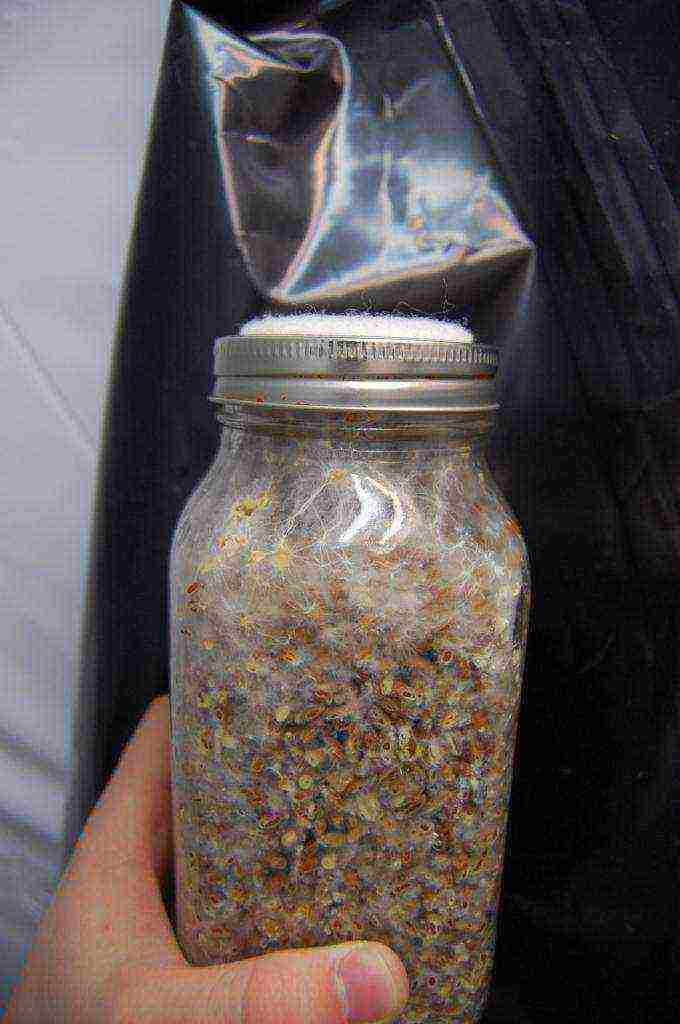
Growing champignons in an apartment
This method is suitable for those who do not have a summer cottage or vegetable garden. The main task for such cultivation of mushrooms is to create optimal conditions under which they will grow and bear fruit normally. An example of how to grow champignons at home is presented step by step below:
- The first thing to do is to isolate any room in the apartment for growing mushrooms from those rooms in which people live.
- Measure moisture. It should be high, about 90%. If its readings are lower, you need to install a humidifier.
- To maintain the optimum temperature, the room is equipped with heaters and ventilation. With their help, the temperature regime will be maintained. It should be borne in mind that mycelium germinates at 20 ° C, and fruiting bodies - at 15 ° C.
- After preparing the room, the selected containers are filled with the substrate.
- Mycelium is planted in them, covered with a film on top, which must be removed after the appearance of the fungi.
- The soil is constantly moistened, it must not be allowed to dry out.
- When the time comes, the mushrooms should be harvested.
Champignons are considered the most common types of mushrooms, so there is no need to advertise them further. The product is widely used in cooking, on its basis first and second courses, canned snacks, salads are prepared. Due to their high protein content, mushrooms are an excellent source of protein. Experienced gardeners prefer to grow mushrooms on their own, but the procedure has a number of features. To fully comply with the technology, you must adhere to the step-by-step instructions.
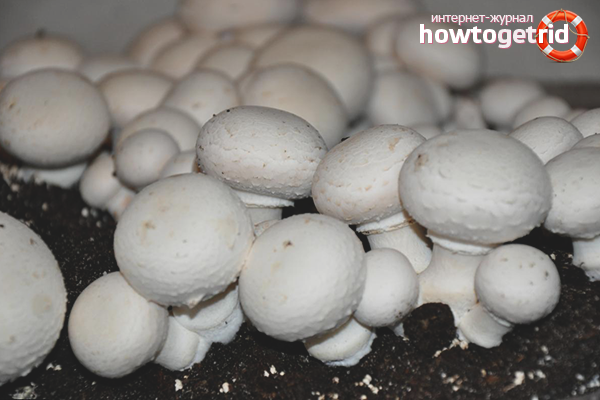
What determines the yield
- The main factor affecting the yield is the implementation of the correct microclimate, in which the ears will begin to bear fruit.Also of great importance is timely watering, proper compost (correctly selected soil composition), resistance to external factors, diseases, pests.
- If you create optimal conditions, you can easily grow mushrooms all year round. First you need to choose a room that has a temperature regime of 14-24 degrees. It is not necessary to take the starting place, the main thing is the ability to maintain the temperature (the presence of a heater or, on the contrary, a split system). In this case, the air humidity should not exceed 90% (the ideal option is considered to be 80-85% humidity).
- An equally important factor in ensuring the proper yield is the circulation of the air flow. Make sure that the selected area is thoroughly ventilated, it is important to provide a supply of fresh air. Otherwise, the excess carbon dioxide released during the cultivation of mushrooms will result in a disproportionate stem (it will stretch unevenly).
- A positive feature of growing mushrooms at home is the complete lack of lighting. It does not matter, so the procedure can be carried out in a cellar, basement or in a covered shed, where the sun's rays do not penetrate. If you wish, you can use the darkened free corners located in the garage or greenhouse. As mentioned earlier, the main thing is to provide humidity and the required temperature in the absence of light.
- Since mushrooms are grown in a humid environment, it is important to immediately prepare for the possible spread of bacteria. Treat the selected room in advance with a composition of copper sulfate and lime, as well as formalin. Disinfection will kill existing microorganisms, so the likelihood of spreading diseases will decrease to a minimum.
- If you plan to grow champignons in the summer or autumn, consider the option of carrying out the procedure at your summer cottage. Pick up a dark place in your backyard field, select a separate bed, cover the soil. Cover the mycelium with roofing material (can be replaced with polyethylene) to exclude the possibility of drying out or, on the contrary, excessive moisture. Such a simple move will provide the proper microclimate.
how to grow oyster mushrooms correctly
Stage 1. Making compost for mushrooms
- Compost refers to the special soil that must be prepared in order to obtain a full harvest of mushrooms. It is worth remembering that the soil is filled with organic compounds that play a major role in the cultivation of mushrooms, so you cannot save on fertilizer.
- Composting is rightfully considered the most time-consuming process, the final result depends on it. Mushrooms, in particular champignons, are highly dependent on the composition of the soil, for this reason, proportions must be observed. Correctly compiled soil consists of one part of moistened straw and 4 parts of horse manure (the proportion of straw to manure is 1: 4).
- Spread the compost in layers, alternating between the two. For maximum effect, line small amounts of urea or superphosphate between the rows. Champignons will grow faster if you use horse manure specifically. However, in its absence, it is allowed to alternate straw with chicken droppings or processed waste products of other animals.
- The lined compost for mushroom ripening should receive air from all sides, for this reason it is not recommended to lay it on the ground. Make sure that the ground is covered with a canopy, do not allow direct ultraviolet radiation or heavy rainfall. Of course, the compost must be moist, but excess water will interfere with fermentation.
- To get high quality compost at the output, prepare a maturing heap. Its dimensions are approximately equal to 1.5 m. In width, 1.5 m. In length and 1.5 m. In height. It is this ratio that will ensure proper combustion.Do not compost in small amounts, as you need large amounts to complete fermentation.
- If we talk about the place where the compost is made, try to carry out manipulations in the open air. As a result of the fermentation of the substrate, ammonia and carbon dioxide are released. Provide good air flow and ventilation when composting indoors.
- The maturation time of the compost varies from 18 to 20 days. Stir and moisten the contents of the pile every 5-6 days to ensure proper combustion. During the first mixing process, add crushed lime to the compost. During the second procedure - superphosphate, then crushed gypsum or alabaster is poured.
- Compost is prepared by fermentation, so its temperature sometimes reaches 53-70 degrees. At the end of the combustion process, the indicator drops to a level of 21-25 degrees. The readiness of the compost can be judged by the smell, the ammonia stench disappears. The finished soil has a brownish tint, an elastic structure (when squeezed, it returns to its original position). The composition should not stick to the hands, while the straw breaks easily and has a soft structure.
how to grow a truffle at home
Stage 2. Composting and caring for mycelium
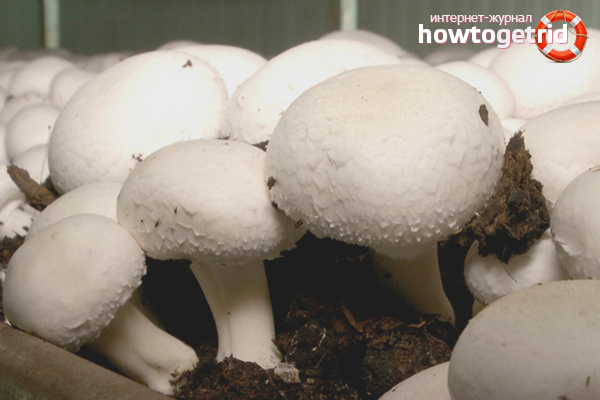
- Once the compost has been prepared, you can start laying it. Select containers for growing mushrooms, spread the mass so that its height does not exceed 22 cm. Wooden boxes, bags, racks or plastic containers can be used as containers.
- If we talk about seed, it is called mycelium. The composition is grown in a laboratory way, so it will not work to produce it yourself. You have to buy the product. The mycelium can be compost and grain.
- The first type has a long shelf life (about 10-12 months at a temperature of 0 degrees). You will need about 500 gr. compost mycelium per 1 sq. m. soil. The grain composition is more efficient and yields better. For 1 sq. m. of soil must be added 330-350 gr. mycelium. At the same time, the product retains its properties for six months, you can keep it in the refrigerator.
- To sow, put the required amount of mycelium in the compost (lift it up with a layer), deepen the seed by 5 cm. The location of the holes is a checkerboard, each depression should be made at a distance of 25-30 cm from each other.
- If all the conditions are met (the temperature of the compost is about 20 degrees, the air humidity is about 80%), the mycelium will develop in 15-20 days. During the ascent of the sowing composition, it is necessary to constantly moisten the soil and monitor the temperature regime of the substrate (the indicator should not rise above 40 degrees). Otherwise, the mycelium will die. To maintain moisture, cover with burlap or plastic.
- If you grow mushrooms in your summer cottage, there is no possibility to regulate temperature and humidity. When the indicators decrease, cover the beds tightly with roofing material or film.
how to make mushroom soup from frozen mushrooms
Stage 3. Ripening of the crop
- As mentioned earlier, mycelium grows in about 3 weeks. You will find out about the completion of the process by the appearance of a spider web with a silvery tint, it will come out to the surface of the soil. At this point, it is necessary to reduce the temperature to 13-16 degrees and sprinkle the cobweb 5 cm of the casing layer. The mixture consists of lime powder and peat, it causes an alkaline reaction.
- To ensure productive ripening of the crop, throughout the entire process, maintain the temperature within the range of 13-16 degrees, the humidity should be about 85%, and do not forget about good ventilation. Watering the soil is carried out by drip with the help of scattering devices that ensure uniform spraying.Such a move will not compact the substrate, but it will fully moisturize it.
- If champignons grow in a summer cottage, protect the soil from direct ultraviolet radiation, and also avoid waterlogging. The sun will dry out the compost or get very hot. At the same time, heavy rains will compress the soil, as a result of which there will be a large load on the mycelium (its development will slow down or stop altogether).
Stage 4. Harvesting
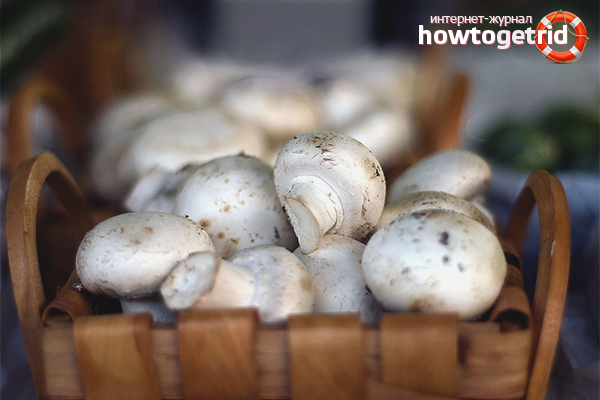
- The first crop of mushrooms can be harvested after 3-4 weeks. The peel will tell you about the readiness of the composition, it will begin to burst in the lower section of the mushroom cap. Champignons have a tendency to ripen in stages, the first harvest is the largest, then the wave subsides.
- To collect mushrooms, twist them counterclockwise, then carefully remove from the soil. Sprinkle the resulting hole with moist soil after removing the fungus. Rotate gently, otherwise you will damage the mycelium layer and young mushroom cobs.
- Collect all specimens, even those that are sick or small in size. Such a move will save the subsequent harvest from pests, as a result of which the fruit bodies will begin to develop many times faster.
- Throughout the entire fruiting stage, spray the room with potassium permanganate, diluted until a raspberry hue appears. You can also use lime at your convenience. Such a move will prevent pathogens from developing in humid conditions.
- In terms of quantity, from 1 sq. m. you will collect about 6-13 kg. champignons. For 2-3 months, the mycelium will bear fruit about 7 times, after which the yield will drop sharply. It is forbidden to reuse the compost, it can be used to fertilize the vegetable garden and orchard.
Prepare compost for growing mushrooms, purchase mycelium. Maintain the required temperature and moisture content of the soil, harvest in stages. Do not use the used compound a second time. After harvesting, disinfect the mushroom containers and the room in which they were grown.
how to store dried mushrooms at home
Video: growing mushrooms at home
Mushrooms are not only a healthy and nutritious product, but also very tasty. Therefore, since ancient times, they have been used to prepare various dishes. Soups, stews, salads, pates, snacks and much more are made from mushrooms. Of course, you want to pamper yourself with such delicacies all year round. Then home-grown mushrooms come to the rescue. This option is suitable for those who do not like to go to the forest, stock up for the winter, or simply prefer to eat fresh. Since champignons are the most common mushrooms, in this article we will consider the question of how to grow champignons at home.
Useful properties of champignons
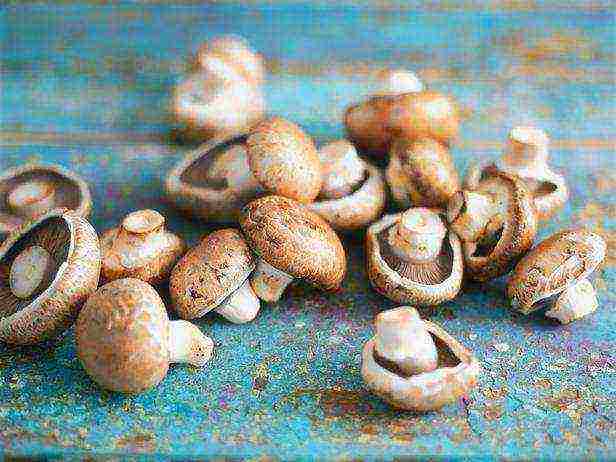
Excellent aroma, piquant taste - this is how you can describe champignons in a few words. However, these mushrooms are distinguished not only by their excellent taste, but also by useful properties. So, what are mushrooms rich in, what is their composition?
- Protein. An important component through which cells are renewed and built.
- Various amino acids. They have a beneficial effect on many functions of the human body, which include thought processes and memory. It turns out that if you know how to grow mushrooms at home, you can provide yourself with a year-round supply that makes our head work.
- Vitamins A, B, C, D.
- Phosphorus. Since mushrooms are rich in this element, they can easily replace fish if you don't like it.
Also, as an antiseptic, you can use the juice of these mushrooms to quickly heal cuts, wounds and ulcers. These are the most basic beneficial properties that champignons have.

Conditions for growing mushrooms
The technology for growing champignons presupposes the observance of some important conditions.
- Lack of sunlight.
- Moderate warmth.It is important to observe the temperature regime, the drops are extremely undesirable when growing mushrooms.
- Uniform and good ventilation.
- High humidity.
- A specific microclimate required at every stage of mushroom growth.
To meet these conditions and successfully grow mushrooms, special equipment may be required. We will return to this issue later, but for now we will consider the places most suitable for growing mushrooms.
Places for growing mushrooms
As mentioned above, several conditions must be met in order to achieve successful year-round mushroom cultivation. At home, a basement, cellar, balcony or garage can be a suitable place, while mushrooms are planted in boxes or pallets.
Champignons are very unpretentious mushrooms, so they can be grown even outdoors in garden beds or in greenhouses. But in this case, it will be possible to harvest the crop only in the warm season.
How to grow mushrooms in the garden?
It is good to grow mushrooms in the garden, since they will be in the fresh air. But in the open field it is more difficult to create the necessary conditions for mushrooms, and this must be taken into account, therefore it is better to cover them with a tarpaulin or make a canopy, a greenhouse. It will be great if there is the most humid and shaded place on your site. Compost is spread on the garden bed, and then everything is done the same as when growing mushrooms at home.

Inventory for growing mushrooms
- Mushroom mushrooms. Of course, nothing will work without her. Therefore, you first need to decide where to buy the mushroom mycelium.
- A place to grow. The options have already been listed above. Most often, the basement is preferred, since it is there that it is easiest to create suitable conditions.
- Shelving. They can be anything: iron or wooden. It doesn't matter: the boxes of mushrooms won't be heavy.
- Capacities where mushrooms will be planted. For this, you can use, for example, boxes, pallets, baskets.
- Fans. Suitable for ventilation and temperature reduction.
- Hygrometer. Needed to monitor the humidity in the room. The optimal indicator is from 50 to 80 percent.
- Thermometer for temperature control. It should be between 12 and 20 degrees Celsius.
- Substrate. Let's consider how to compose it correctly.
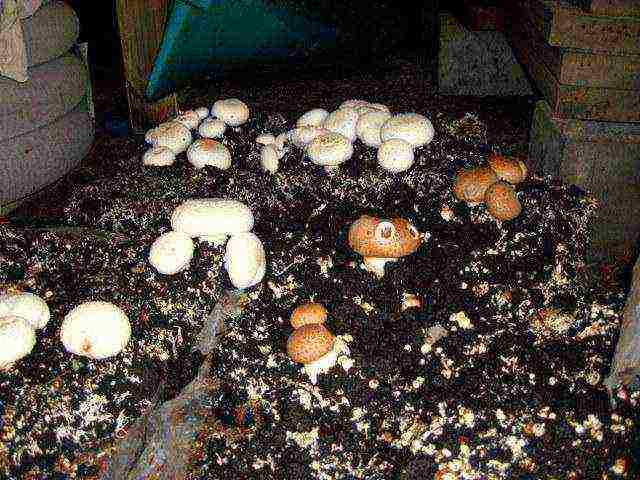
Substrate for growing mushrooms
This is considered the most difficult stage in mushroom cultivation. A poor harvest may result if the substrate is not compiled correctly. So how should you compose it?
For the substrate, you will need mushroom compost, which includes: manure and straw from rye or wheat. Horse manure will yield high yields, but cow or bird droppings can also be used. It will be a plus if you add fallen leaves that are not rotten and some organic waste, because mushrooms are very "gluttonous". Also, beet tops, sunflower seed shells, urea, chalk, gypsum, bone meal, bran and superphosphate are used as nutritional components. When compiling the substrate, the following proportion is observed: 75% manure and 25% compost.
How to grow champignons at home in a small area of 1.5 square meters? You can use the following compost formula.
- Straw - 50 kilograms.
- Urea and superphosphate - 1 kilogram.
- Gypsum - 4 kilograms.
- Chalk - 2.5 kilograms.
- Manure - 150 kilograms.
In total, a little more than 200 kilograms of substrate will turn out.
The straw must first be soaked for a day, then lay it in layers with manure. It is better to moisten each layer of straw with urea and superphosphate. Then everything is mixed and other nutritional components are already introduced. The substrate should now be infused for about 20 days. We can talk about complete readiness when the unpleasant smell of ammonia disappears.
It is not necessary to stick to this formula, there are other recipes for how to grow mushrooms at home.
When compiling the substrate, you need to be prepared for the fermentation process to begin, which is accompanied by the specific smells of ammonia and carbon dioxide, so it is better to do this not indoors, but in the fresh air. The compost should be covered with a canopy to hide it from rain and sunlight.
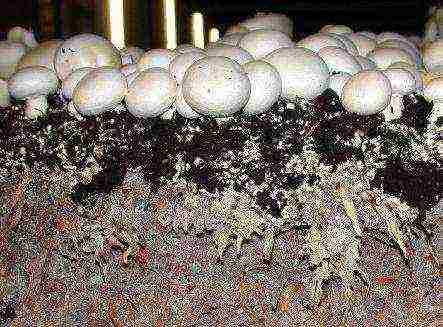
Planting mushroom mycelium
At home, it is better to grow sterile myceliums obtained in laboratories. They take root more easily and reproduce faster. Mushroom mushrooms come in different varieties, one type is consumed more, the other less. So, for 1 square meter of substrate, 400 grams of grain mycelium will be required, and manure - 500 grams.
When you have decided on the amount of consumables and bought it, you can proceed to direct disembarkation. First, you should measure the temperature of the substrate, the most optimal for the mushroom mycelium is considered to be about 25 degrees.
So how to grow champignon mushrooms? The holes are recommended to be staggered at a distance of 20-30 centimeters from each other. The mycelium needs to be broken into small pieces and planted to a depth of 5 centimeters. The grain variety can be simply laid on the surface.
Care for mushroom mycelium after planting
After replanting the mycelium, the conditions mentioned above must be observed. This is high humidity and moderate heat. Moreover, these conditions must be met not only indoors, but also in the substrate. To keep it constantly moist, you can cover it with a newspaper and spray it from time to time - then the compost will not be dry.
After about a week, the mycelium will begin to grow, then the substrate should be sprinkled with soil on top by 3-4 centimeters. The technology for growing mushrooms suggests that during this period it is necessary to slightly lower the temperature of the substrate to about 20 degrees, and indoors - to 12-17 degrees. Do not forget about good ventilation in the room, however, drafts should not be allowed. In principle, that's all the care of the mycelium.
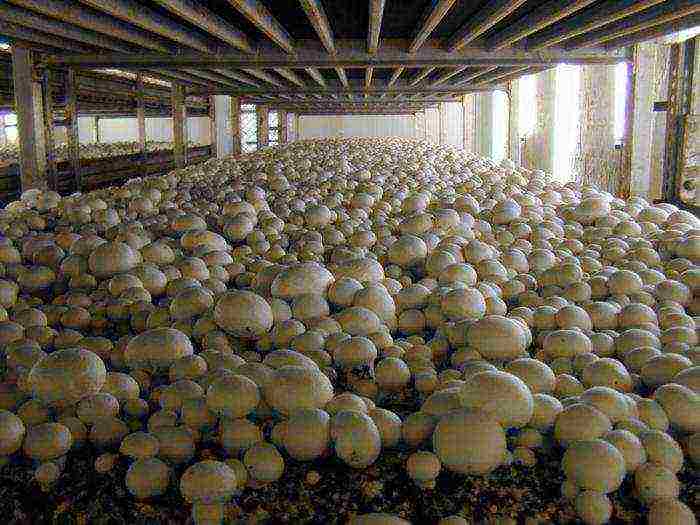
Harvesting champignons
It is not enough to know how to grow champignons at home; harvesting also has its own nuances.
With good care, champignons bear fruit in waves for up to two months, during which time you can get mushrooms many times. You can start harvesting the first crop after 30 days.
Champignons are not cut, like forest mushrooms, but are twisted out of the substrate. Then the empty hole is sprinkled with earth and moistened to create conditions for the emergence of a new crop. Not all mushrooms are picked, but only "ripe" ones - these are those that have a stretched white film under the cap that connects the leg and the edges of the cap, and the plate has a pale pink color. It is not recommended to eat champignons with brown plates. If the film is broken, then the mushroom is considered old. This should not be allowed, as it greatly depletes the mycelium.
Growing champignons - a business idea
The cultivation of champignons was popular in the 18th century in European countries and not only, most often in Italy, France, America, Germany, Sweden, England and Belgium. In Russia, home production of these mushrooms began only in the 19th century, because our forests are already rich in edible gifts of nature.
Today mushroom cultivation is a profitable business. If you make simple mathematical calculations, then in one year you can get up to 6 harvests. Of course, there will be additional costs for equipment, electricity and heating. But in general, you can get a good income from the sale of champignons, you just need to know to whom to constantly sell the resulting crop.
It is not surprising that today such a niche as mushroom cultivation is already occupied by entrepreneurs, because these mushrooms bear fruit abundantly, they are easy to grow, and the necessary raw materials (in fact, waste) can be purchased almost for free.Of course, you can try to break into this business, but you will have to work hard to get a solid profit from it in the first months.

Now you know how to grow mushrooms at home, and what equipment is required for this. You can start production on a large scale, or you can plant these mushrooms for yourself, for your soul, to feast on them all year round. In any case, growing champignons is not difficult and even interesting.
Growing champignons at home for beginners, as well as for experienced mushroom pickers, is a modern, fashionable, exciting activity. This is both a kind of hobby and a source of additional income, if you approach business rationally and competently.
Champignons are a fairly popular, always in demand, tasty and healthy food product. They do not stale on store shelves, despite the fact that they do not have the lowest cost. Growing them yourself, you will always be sure of their "pure" origin. They are useful: they contain glucose, carbohydrates, vitamins, 18 amino acids, easily digestible fats. They are also harmoniously combined with any products, they can be boiled, fried, baked, pickled, canned.
This mushroom is incredibly tasty, low in calories, and is an excellent alternative to meat (which undoubtedly attracts the attention of vegetarians).
Knowing how to grow mushrooms at home, you can provide yourself, as well as your friends and relatives with a quality product.
Champignons, photo:
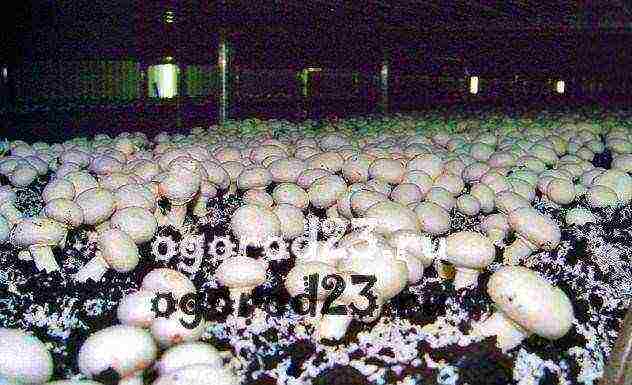
Before starting to practice mushroom growing, you should sensibly assess your desires and capabilities. In addition to time and money (purchase of materials), you must have appropriate premises. Some skills, a detailed study of information on the relevant Internet forums, the presence of a competent advisor will never hurt you. If we compare the process of growing mushrooms and oyster mushrooms, then our case, of course, is more time consuming. But if you compare it with the worries and nuances of growing porcini mushrooms, then it will be much easier, shorter in terms.
↑ back to content ↑ Where do mushrooms grow in nature?
If we consider natural conditions, then they are found almost everywhere. Forests, steppes, meadows, forest edges, lowlands, open spaces with moist soil and even semi-deserts, mountain forests are common habitats.
As for the "home" conditions, they can grow in a garden or vegetable garden, cellar, basement, specially equipped garage, greenhouse.
How to grow mushrooms? Many years of experience of mushroom pickers have proven that they grow best where the basement is equipped with good ventilation.
In this case, the air temperature should be relatively cool (not higher than +20 ° C), and if this process is set to flow, then the indicator of the mercury column on the thermometer should vary between +12 .. + 18 ° C all year round. The percentage of humidity should be approximately 70..85%, lighting does not play a special role.
It is not recommended to grow mushrooms in an apartment due to the lack of all the required standards: temperature, the presence of compost (odors from it), lack of space.
↑ to content ↑ Cultivation of champignons at home - technology
The necessary factors for a successful process are:
- The right choice of location.
- Disinfection of the premises.
- Microclimate organization.
- Competent preparation of the substrate.
- Composting.
- Mycelium selection.
- Planting mycelium.
- Appropriate care.
As mentioned above, under properly organized conditions, mushrooms can be grown throughout the year. The technology itself is not very complex, as it might initially seem. From the very beginning, you need to correctly arrange everything, and then the process will go along the knurled path. This work can even be called creative, something like a hobby.To date, breeders have bred approximately 50 varieties of this mushroom, which have minor differences in appearance. The color of the cap, its structure, and the duration of storage may vary, but all cultivated varieties are “children” of the common white champignon.
An example of a light brown variety in the photo:
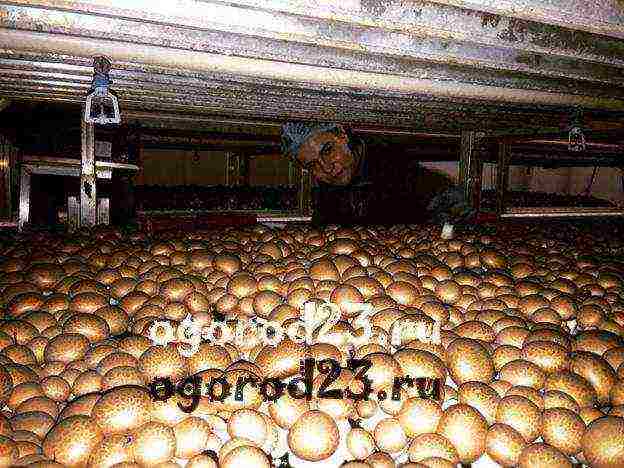
Let's consider basement growing as a basic example, since this method is considered the most common. For so-called “cellar” breeding, it is best to choose high-yielding varieties such as Sylvan 130, Hauser A15 or Somycel 512. They are quite unpretentious, it is not difficult to take care of them, and they are also very "prolific".
Remember - the most important factor for the successful result of your efforts is the presence of well-established ventilation in the room where the mushrooms will grow!
A constant supply of fresh air is very important, since during growth they emit carbon dioxide, and its excessive concentration in the room leads to stretching, lengthening of the mushroom leg.
↑ back to content ↑ Growing mushrooms in the basement
The selected room must be decontaminated. This factor does not depend on whether it is a basement, a garage or a separate shed. As mentioned above, in addition to high-quality ventilation, there must be a high level of humidity. This is necessary for the qualitative growth of mushrooms, but high humidity is a direct path to the appearance of mold and various fungi on the walls and shelves. In addition, the champignons themselves are extremely sensitive to all kinds of parasites and diseases. Therefore, the processing of the premises is an indispensable item for the mushroom grower.
How to grow champignons at home - disinfection of the premises:
- Of the most common, often used, it is whitewashing of the ceiling, walls, all surfaces with limestone with copper sulfate (copper sulfate) added to it. The so-called "recipe": 2 or 3 kg of slaked lime + 100 g of copper sulfate per bucket of water (10 liters). When working with disinfectants, be sure to wear a face shield!
- The second method is more dangerous for the human respiratory tract and also requires protection. 350 g of bleach is taken, diluted with 10 liters of water, applied by irrigating the walls of the room.
- Irrigation of walls and other surfaces with 4% formalin, using a construction spray gun is the most convenient.
- You can fumigate a room with a sulfuric checker - it also gives a very effective preventive effect.
- Chlorophos is a radical, destructive method, but too poisonous in its composition. It works not only on mold, but also on harmful insects.
After any treatment, the room must be properly ventilated - this is also a prerequisite.
Let's go back to ventilation, or rather - let's clarify one nuance: the air should be fresh, but drafts should be excluded. It is better to close ventilation pipes ("strangleholds") with nets with a fine mesh - this will create an obstacle to the penetration of insects, as well as a small barrier for air masses. If you have a serious room of large size, and the cultivation is on stream, then the ventilation system should be more global, with additional fans located above each large box. If opportunities allow, then the installation of air purifiers with replaceable filters will not be superfluous for this business.
It is clear that a thermometer with a hygrometer is essential for a room where mushrooms are grown. So you can always control the level of humidity in the air: if there is a lack - to irrigate with water from a spray bottle, if there is an excess - to ventilate. With the onset of the summer heat, the fans solve this problem, but if the cultivation of this type of mushroom takes place throughout the year, then in addition to all the aforementioned benefits of civilization, you will also need additional heating of the basement or cellar.
Large cellar room, photo:
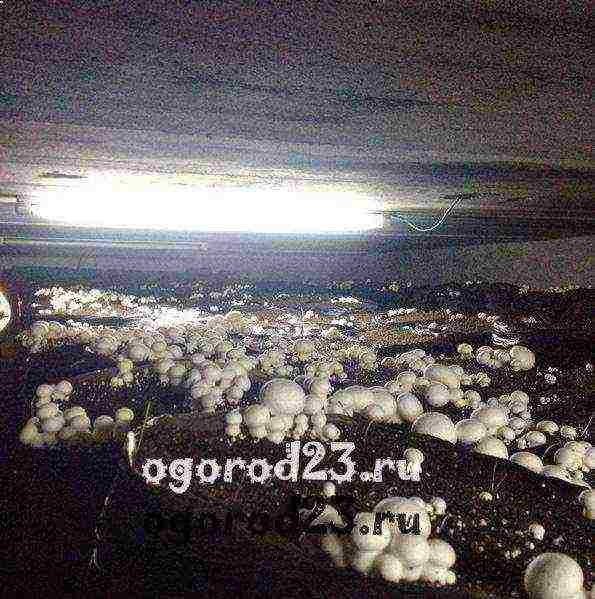
It is best if your cellar, in addition to all the requirements for growing, will have an earthen floor (not concrete). By and large, the more purposeful the room will be adapted specifically for mushroom growing, the better. Any unnecessary additional factors in the basement, cellar, garage or shed that are not related to the cultivation of mushrooms will only interfere and disrupt the "microclimate" of the room.
To the "pluses" of mushroom science can be added the fact that they are able to perfectly bear fruit even in complete darkness. This sets them apart from all other green dwellers. The weakest light bulb is enough - they will feel comfortable, but the light, rather, will be more useful to you in order to comfortably navigate in place.
If growing champignons at home initially has far-reaching plans, the owner has a large room, then dividing it into 2 zones will be a reasonable, convenient solution. Simply put - mushrooms must originate somewhere, and a specially prepared substrate is designed for this process (more on that later). So, in one zone there will be a substrate through which the mycelium will spread (this is called incubation). In the second compartment, boxes with mushrooms will be placed directly, where they will be distilled.
The temperature regime of these two compartments should also be different: mycelium usually grows at a temperature of +23 .. + 24 C °, and the growth of mushrooms occurs at a temperature column of +16 .. + 18 C °. If you get used to it, work out your own "schedule" of moving boxes from one zone to another, you will be able to grow these delicious, beloved mushrooms all year round.
↑ to content ↑ Compost for growing mushrooms
Composting (substrate) preparation is one of the most critical aspects of mushroom growing. The quality of the mushrooms will directly depend on the properly prepared substrate. Usually, when you buy mushroom mycelium, the packaging with the contents indicates the appropriate substrate for this variety, as well as the nuances of its preparation. The varieties are different, and the composition of the compost, its collection technology may vary. However, most often these parameters do not differ significantly.
Mycelium, photo:
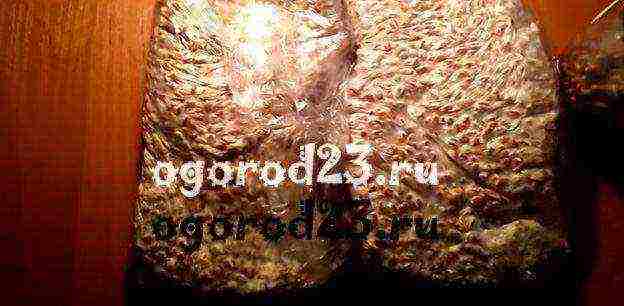
The substrate should be prepared either in a specially designated room for this purpose, or in the open air (outdoors), under a well-equipped canopy. It is important that no precipitation (rain) or sun rays fall on the compost. It is also highly discouraged to pour compost on the "bare" ground - spread a sheet of thick plastic wrap. Thus, unwanted insects or any other pests will not penetrate into the substrate. It should not touch the ground, but blowing air over it from all sides is a must!
The mushroom compost should be moderately moist, as excess moisture can disrupt proper fermentation processes.
Be that as it may, the street is the best place for the maturation of the substrate, the active release of ammonia, carbon dioxide will not be useful to anyone. The average time of "readiness" of the substrate, its fermentation, is approximately 25-30 days. During this period, it is recommended to stir it at least three times (to ensure even fermentation). You will know that the process has come to an end by the absence of a specific smell of ammonia. By this time, its color acquires a brownish tint. While the substrate is fermenting, the temperature inside it can be about +50 .. + 65 C °, and the compost already ready for use has a temperature of no more than +24 .. + 25 C °.
By the way, to enrich the contents of the compost when you first stir it, you can add crushed lime to the general composition. During the second mixing - superphosphate fertilizer, during the third - ground gypsum or its construction analogue (alabaster).Already "ready" substrate, in addition to the above-described features, does not stick to hands, springy with tactile contact, the straw is extremely softened, easily divided into fragments.
As an alternative to the independent process of compiling the substrate, you can advise the purchase of ready-made compost, which is sold in the garden departments of supermarkets or flower shops. Of course, such a substrate will be of lower quality than one prepared with one's own hand, although it will be written on the package that it has all the required characteristics.
It is up to you to decide what is more convenient for you, whether you have the time to carry out all the points of preparation for growing these mushrooms. While looking at the common attributes of good compost, let's highlight the main ingredients.
The composition of the compost for growing mushrooms:
- For these purposes, it is considered to be the best horse waste products. In addition, it is important to consider that the horses fed on hay, and not on green grass. The moisture content of horse manure for composing the substrate should be approximately 45%. Horse waste can be replaced with cow or bird waste, but, according to the experience of seasoned mushroom pickers, the harvest on such a "basis" will be much worse. So, you need about 100 kg of horse manure.
- Straw - choose a dry, rye or wheat variety. You will also need about 100 kg of it.
- Alabaster (gypsum) - about 6 kg.
- In other cases, alabaster is replaced with urea (2.5-3 kg) or the same amount of nitrate (per 100 kg of straw and 1000 kg of manure). As we remember, these fertilizer additives are applied while mixing the compost.
- Again, using 100 kg of horse waste, 100 kg of well-dried rye straw, 3 kg of urea, 5 kg of chalk, 2 kg of superphosphate, 8.5 kg of gypsum, when mixed, will create an optimal ratio of ingredients.
How to grow mushrooms at home? Use fresh animal waste while still providing maximum nutrient content. Make sure that there are no coniferous shavings or sawdust in the introduced components - they release resin, and these mushrooms feel it, react painfully to its presence. Phosphate fertilizers, as well as urea, are actually highly recommended, useful - they are sources of phosphorus and nitrogen, which are so necessary for mushrooms. But chalk normalizes the acidity of the substrate, maintains the optimal pH level.
Champignons: Growing at home - the easiest way to create layers:
- We take a convenient wide container, fill it with hot water, soak the straw for about 24 hours.
- After that, we lay it in layers together with the manure. You will have about 5-6 layers. Do not forget to moisten each layer with not very hot water, lightly, but do not moisten abundantly.
- After 3 days have passed, we take a pitchfork and thoroughly mix the compost-straw "cake", but at the same time we add fertilizers - superphosphate with urea (urea). At this stage, the substrate begins to smell strongly of ammonia. After 4 days, we shovel the substrate again, additionally adding those dressings that are required by the standard for this variety.
- In general, the mixing of the compost should be done about 4 or 5 times at a time. Spare no effort on this - useful elements will be evenly distributed throughout the composition, and the mass will acquire a relatively uniform consistency.
The so-called "care" of compost has already been described above, but I would like to add, repeat about the warning about excessive moisture. Too much moisture in the substrate will slow down its maturation, but even worse, it will wash out all the useful ingredients required for development and growth from the mixture.
Compost components (dry hay, horse manure, fertilizers), photo:
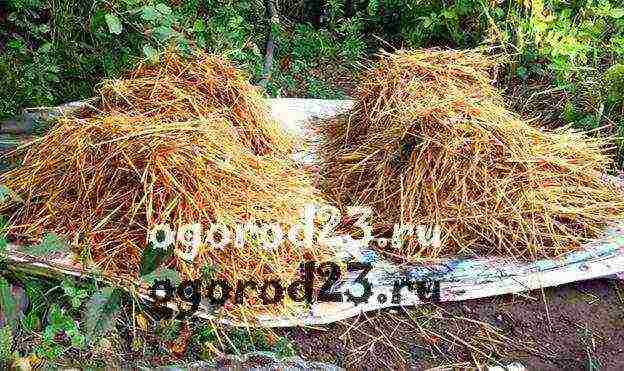
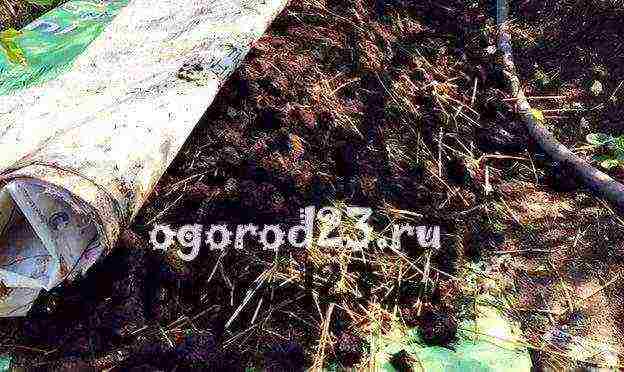
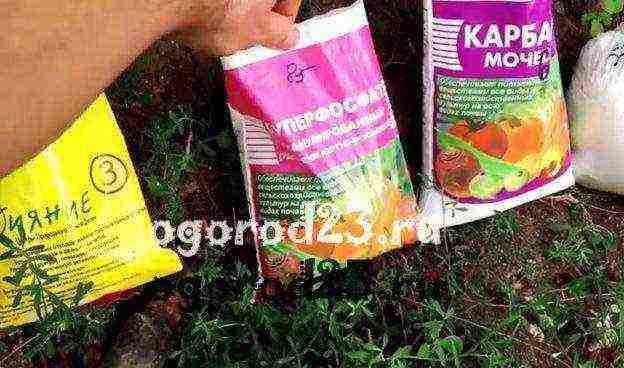
↑ back to content ↑ Champignon mycelium - planting
The substrate, of course, should be purchased from a reliable representative (best of all - special laboratories).When the compost is already ripe, we transfer it to the agreed place, put it in boxes or special forms, where further actions will take place:
- To get a good harvest of mushrooms, about 500 g of mycelium or 400 g of these varietal spores are needed per 1 m² of compost.
- If mycelium is used, then small dimples, 4 or 5 cm deep, should be made over the entire surface of the container with compost, at a distance of 20 cm from each other. An appropriate amount of mycelium is laid in these pits, but if fungal spores are used for sowing, then they are simply scattered evenly over the surface of the substrate.
- After a while, you will notice cobweb strings covering the surface of the compost containers. By this time, the temperature of the air humidity in the room should be at the level of 75-95%. To prevent the substrate from drying out, it can be sprinkled from time to time with clean, settled water from a spray bottle, and additionally covered with a clean, damp cloth or paper.
- The mushroom mushroom begins to grow at a temperature of +20 .. + 28 C °, the active phase of the spread of the mushroom "cobweb" occurs after about 10 or 12 days, then the top layer of compost will need to be sprinkled with the appropriate soil mixture (about 4-5 cm), wait another 3 days, after which move the containers with future mushrooms to a colder room with a temperature of +12 .. + 16 ° C. Or, forcibly lower the temperature in the room to a given indicator of the mercury column.
- Please note that ordinary garden soil for "sprinkling" will not work for you. Prepare in advance a mixture of 1 part of limestone, 5 parts of peat, 4 parts of clean soil. After 3 - 3.5 months, expect the first well-deserved results of your labors.
A harvest from one mycelium can give from 5 to 8 ripening periods for new mushrooms. This is called a "wave", the most generous collection of mushrooms falls on the first three "waves". Here it is important to catch the moment of ripening - when the cap is still covered from below with a thin white skin (film), and brown plates are not yet visible. Mushrooms need to be twisted, as it were, from the place of their growth, but not cut off (so that harmful bacteria do not penetrate into the mycelium through the cut site).
After the crop is harvested, gently sprinkle the substrate with the above-described soil mixture again. During the next two weeks, they will grow especially actively.
A mushroom correctly extracted from the soil, photo:
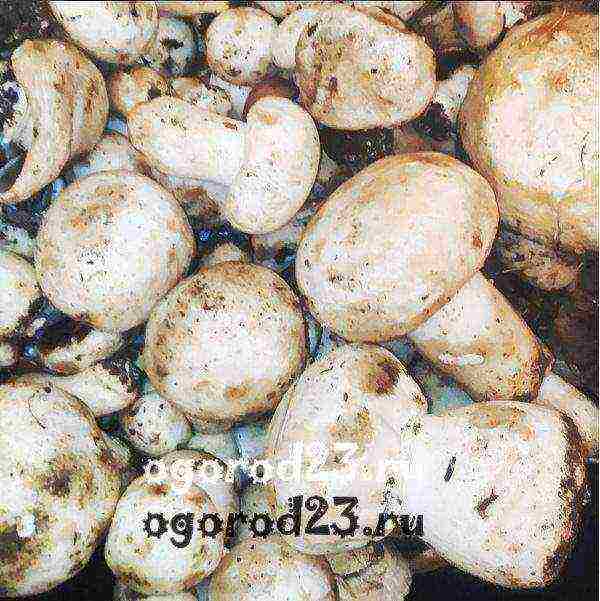
Hat in optimal ripening state, photo:
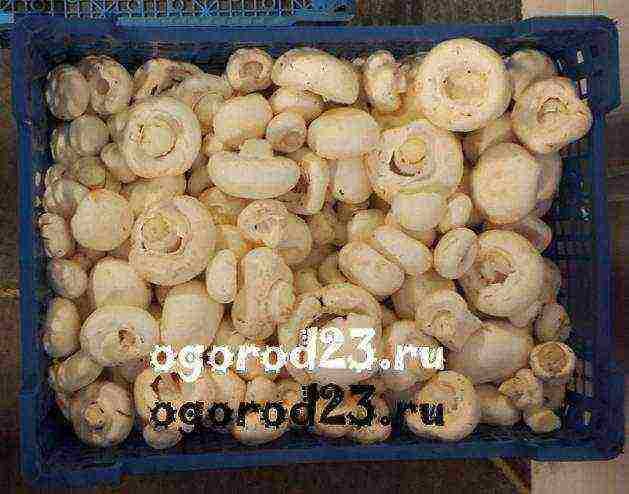
↑ to the content ↑ How to grow mushrooms in the country in the open field?
In addition to the most commonly used "basement" method of growing mushrooms described above, there are other alternatives. For example, how to grow mushrooms at home, namely, at their summer cottage. Sometimes, for some reason (lack of a basement, garage or other suitable premises), the desire to grow these mushrooms seems impossible. But if you are the happy owner of a summer cottage, everything is feasible!

The most successful period for this is summer and autumn, here it is also important to choose a comfortable place. Champignons - where do they grow? In shaded places, on specially prepared soil, the place for the mycelium should be moderately moist, the earth should not dry out, the sun's rays should not illuminate the chosen place too much. To protect against drought on hot days, the beds are often covered with plastic wrap or special covering material to create a certain microclimate. It is important to bring mushrooms as close as possible to conditions similar to their natural growth environment. Since we cannot influence the weather conditions, we must try to give the mushrooms moisture - when they need it, as well as the availability of fresh air.
In the garden under the trees, photo:
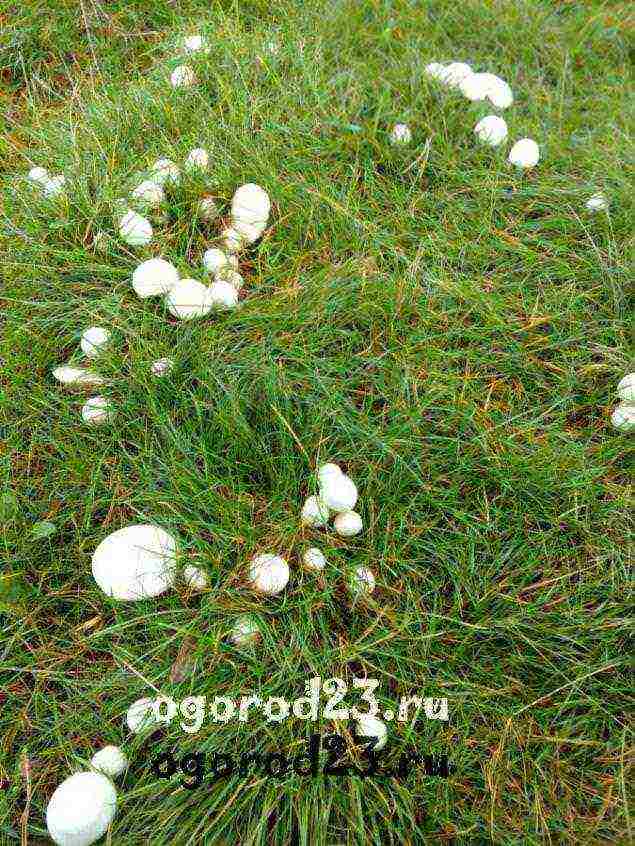
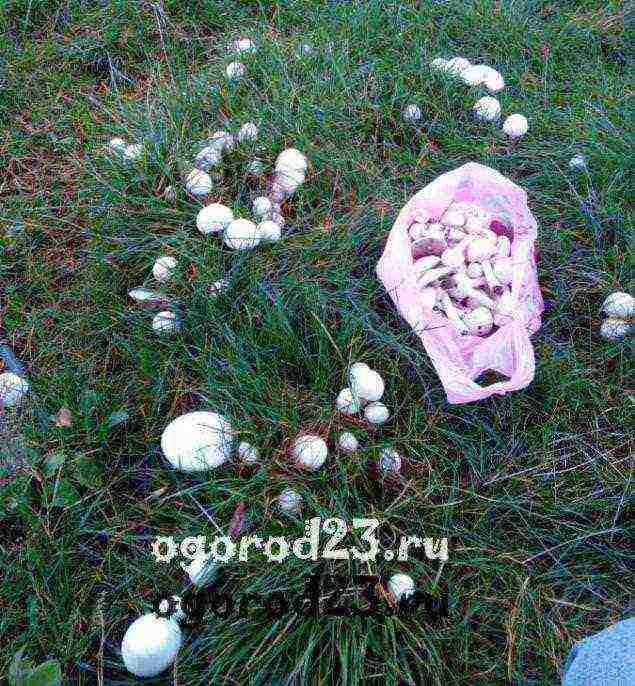
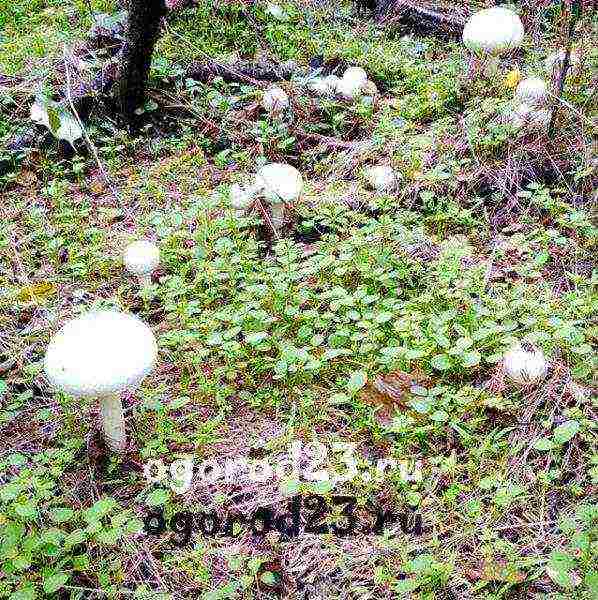
After sowing the mycelium in the beds, in the open field, growing champignons - their technology, practically does not differ from the rules for growing in a cellar.After a couple of weeks, the "cobwebs" of mycelium grow over the soil surface, at this point the temperature is lowered by sprinkling the soil surface with a thin (up to 5 cm) layer of moist earth. The temperature, similarly, should vary within +12 .. + 15 С °, but in no case should it reach above +20 С °. As in the above method, it will be much more productive if this land contains peat and limestone. Regular watering (or rather, delicate irrigation) is best done after sunset - this will optimally moisturize the soil and prevent a dense earth crust from forming. With the right approach to business, in about 3-4 weeks you can expect a harvest of your own mushrooms.
Mycelium sprouts cobwebs, photo:
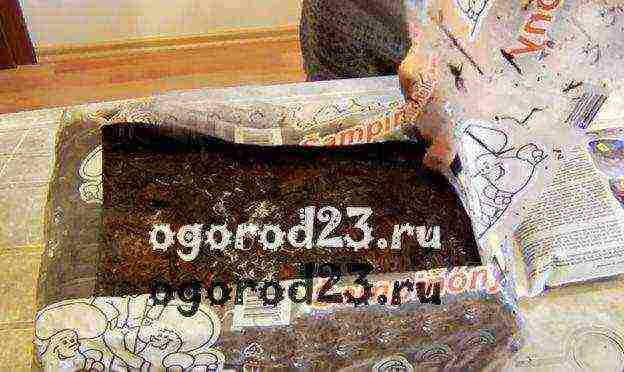
Let's summarize how to grow mushrooms in the country:
- It is better to plant mycelium or spores on soil specially prepared for this. This can be soil brought from the forest zone.
- The soil should be optimally saturated with top dressing, be well moistened, not have stones, fragments of bricks or remnants of old roots.
- It is best to plant mushrooms outdoors at a neutral air temperature - +21 .. + 22 C °.
- If a greenhouse is chosen for planting, you should carefully monitor the level of humidity and air temperature in it. The conditions are not very different from the basement or garage cultivation of mushrooms. It should be remembered that heat and drought are destructive for them.
- As already mentioned, the planting technique does not differ from the "basement" analogue (20 cm from each other, shallow pits, dusting with earth mixture after the appearance of the "cobweb").
- With the receipt of the first mushrooms, the abundance of watering can be reduced (so that the roots do not rot), irrigation is our everything in this matter.
After all the waves of the mushroom harvest come to naught, the spent substrate can be simply disposed of, or it can be quite successfully used as an organic fertilizer or mulch for some trees or even flower beds. Of course, it is no longer suitable for re-growing mushrooms, but as an excellent top dressing for your green inhabitants, it will quite serve. As for all kinds of containers, boxes after harvesting and composting, they will require mandatory disinfection treatment, as well as the room where the mushrooms were grown.
↑ back to content ↑ Reviews of those who grew champignons
Champignon is such a mushroom, the demand for which is much higher than for oyster mushroom. For example, we buy them for every holiday, but oyster mushrooms, perhaps once or twice a year. If oyster mushroom can be grown in the garage without any preparation, then, for the champignon, you need to specially equip the room with ventilation, irrigation, and an automatic system for maintaining the set temperature.
Goshek
A friend of mine grew mushrooms in the basement of a wooden house. As a result, the logs were infected with a fungus. It is better to grow them in a specially designed room.
Nadeya
Hi, I don't know if my experience will come in handy, I really just collect them, I work on the farm where they are grown. 1) they do not need light at all. They grow in our dark hangars. When we work, we turn on the light, of course. When not, then no. 2) When they germinate, you do not need to water them. It is necessary to water before such small fungi come out, otherwise if water gets on them, they get dirty and get sick 3). We have sawdust (more precisely, compost with straw) in a layer of about 15 cm, and sprinkled with earth on top. The ground layer is about 5 cm. The total height of the beds, respectively, is 15 + 5 cm. 4) Temperature + 15-20, the lower (up to 15), the supposedly better they grow. 5) I don’t know about humidity, I haven’t seen the sensors even once, but it’s quite possible - since we have them in 5 rows (racks) 6) Harvesting: Tear off carefully, as if unscrewing it from the ground, it is enough to make half a turn. Collect gradually as it grows.As soon as the caps begin to open (they become such a brownish color and soft to the touch, but have not yet opened), collect everything that has come out with the exception of the smallest ones the size of a fingernail. Water again, as it should, and wait a week for the second harvest. Then you can wait for the third. We have the third - the last one, then everything is thrown away (composted) and everything is laid again anew.
Nadya
Yes, they grow on their own 😉 We put cow dung in a pile, and the cows graze in the meadow, where mushrooms and hats are found and eat. Here we grew up on last year's manure, and when they sprinkled the garden with manure, they still grew there for 3 years, not much, but there was enough for pizza.
Gopher
Growing champignons at home for beginners cannot be called an entirely easy process, but, as in any new business, observing the rules, as well as taking into account the advice from already experienced mushroom pickers, will undoubtedly help you in this interesting, exciting activity. And the crop grown with your own hands will delight you, your loved ones and, quite possibly, will bring material income!
